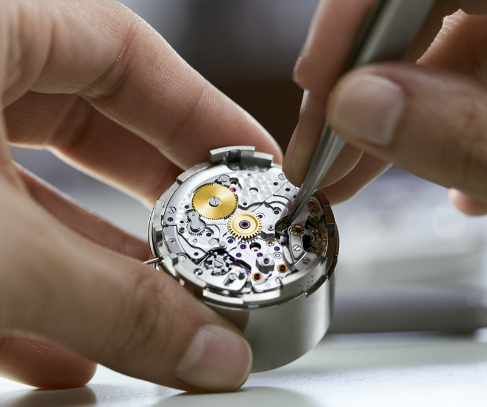 |
| Rolex Datejust Turn-O-Graph Reference 116264 |
I made a discovery when I was looking through a selection of new Rolex timepieces. I saw this interesting Rolex that was clearly something I have never seen before. I thought I had discovered a hidden treasure... a rare species.
The timepiece looked like a Rolex Datejust, but it has some unique differences. Specifically the seconds hand is bright red. The date in the 3 o'clock aperture is also red. But the most unique difference is that the bezel has a 0-60 marking on it in 10 second intervals.
A New Datejust?
So, this was clearly NOT a Datejust even though it retains the name Datejust on the dial. It wasn't quite like anything I had seen before. However, it had many of the same features were there. It has the Oyster case, luminous hour markers and Mercedes-style hands and a screw down crown. This model is the 116264 which was produced sometime in the early 2000's. This reference features a Caliber 3135 automatic movement in it. This one features a Jubilee bracelet and a 36mm case.
As I started to look online, I found that this new Rolex, was actually one of the original Rolex timepieces which had been discontinued and recommissioned in the early 2000's for a short while before being discontinued yet again in 2011.
 |
| Vintage Turn-o-graph Ref 6309 with dauphine hands and hour markers. Photo from Phillip's. |
Historically Importance of the Rolex Turn-O-Graph
Pictured above is a vintage Turn-O-Graph reference 6309. This was a later model Turn-O-Graph featuring some exceptionally attractive Dauphine hands and hour markers. This integrated the Turn-O-Graph into the Datejust lineup and added the date window with cyclops lens. It features a caliber 743.
But if we step back in time a bit further we can see the Reference 6202 with exceptional patina on its more standard hour markers - often found on modern Submariners and other Rolex Lineups.
 |
| Vintage Turn-O-Graph 6202 - picture from chrono24 |
The Turn-O-Graph acquired its name "Thunderbird" because in 1953 the U.S. Air Force Demonstration Squadron, the Thunderbirds - the pilots began wearing the timepiece while performing. Rolex capitalized on the partnership and issued rare Thunderbird Turn-O-Graphs to the talented pilots. This made the Turn-O-Graph one of the first Official Military timepieces. And since it was worn by these acrobatic pilots of the USAF, the Turn-O-Graph became the first Rolex pilot's watch.
 |
| Rolesor version Reference 6609 - Picture by Chrono24 |
The Turn-O-Graph is also the first Rolex to use 2-toned gold and steel - the first "Rolesor" sports watch.
Inspiration for the Submariner and GMT
The Rolex Turn-O-Graph's rotating bezel and design became the inspiration for both the Submariner and the GMT-Master. The introduction of the Turn-O-Graph into the Datejust line most likely killed the model since its unique appeal of its rotating dial was probably lost since the GMT and Submariners took off with great fanfare. Datejust users were probably not impressed by the "tool" functionality. The distinctive Turn-O-Graph features really never became standards. You could see many different bezels, hour markers, hands, and more. Unlike many distinctive Rolex timepieces, the Turn-O-Graph kind of lost its unique identity - trying to take on too many looks. It never developed its unique style.
However, it is clear that the Submariner and GMT-Master owe their popularity today to the early Turn-O-Graph designs. Vintage Turn-O-Graphs have been fetching a nice price in auctions today, but haven't had the kind of outrageous success of the Rolex Daytona. So, it is still possible to pick up a vintage Turn-O-Graph for a reasonable price in comparison.
- November 25, 2019
- 0 Comments













